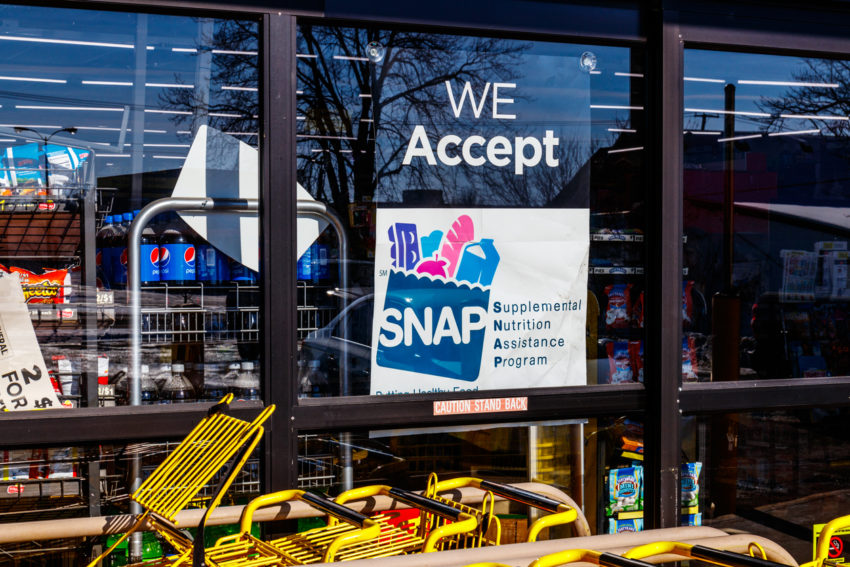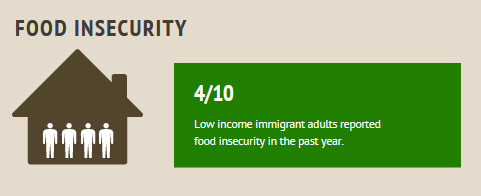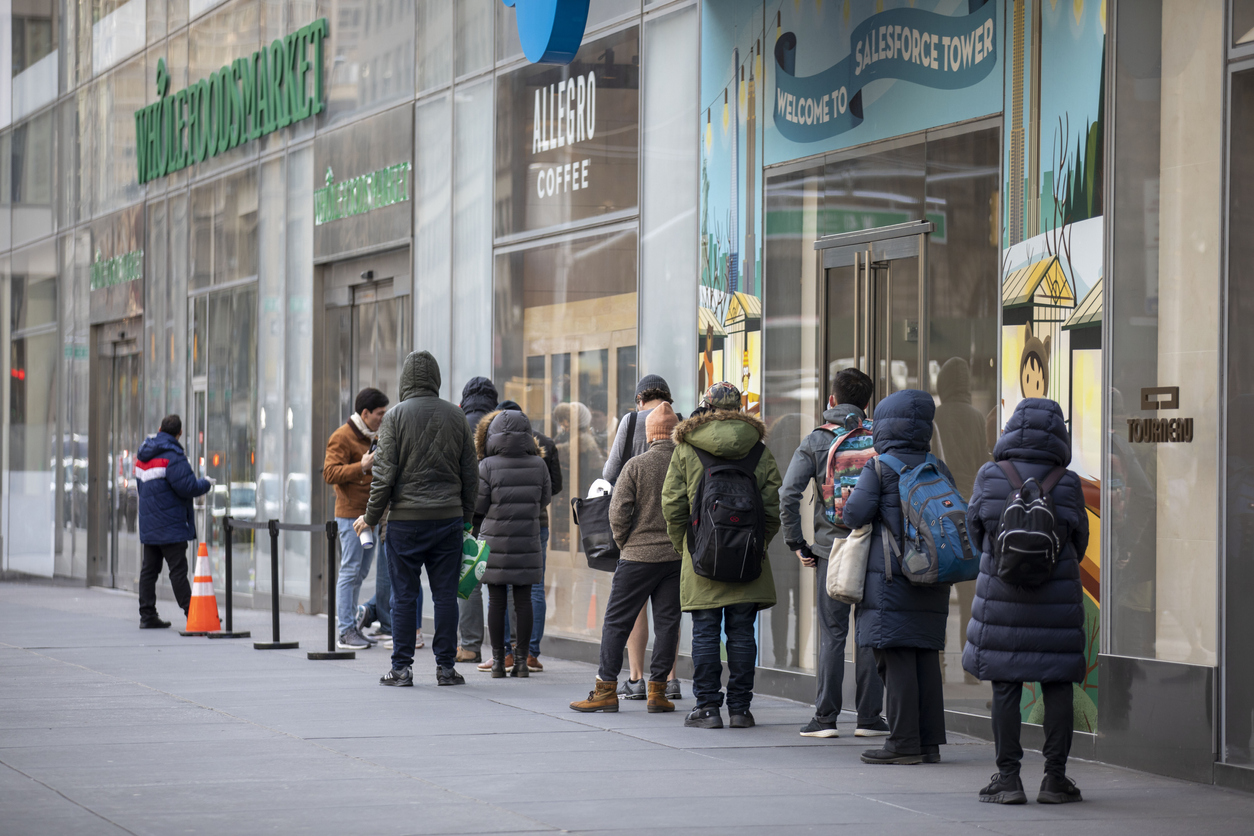
Share On Social!
Despite being severely impacted economically by the COVID-19 pandemic, low-income, immigrant families often avoided federal assistance programs, according to new data from the Urban Institute’s Well-Being and Basic Needs Survey.
“Many immigrant families have suffered significant economic hardships and health impacts during the COVID-19 crisis and have faced barriers to participation in safety net programs or other supports,” according to researchers Hamutal Bernstein, Dulce Gonzalez, and Michael Karpman.
Unfortunately, barriers like restrictive eligibility rules for immigrants as well as a fear of deportation or barring from legal residency discourage immigrants from seeking help through federal assistance programs, like food and housing aid.
However, with President Biden’s recent reversal of the Trump administration’s public charge rule, immigrant families can pursue federal aid without penalty or fear of deportment.
With equitable policies and communication, the barriers preventing low-income immigrants from accessing assistance programs can be eliminated.
About the Data from the Urban Institute
To collect the data, researchers from the Urban Institute surveyed 2,046 immigrant adults. The survey was administered in English and Spanish.
The survey assessed hardships, financial concerns, and “chilling effects,” defined as avoidance of noncash benefit programs or other assistance because of concerns about future green card status or immigration status or enforcement.
The U.S. is home to 44 million immigrants.
Most immigrants are Latino. They relocate here from Mexico, El Salvador, Cuba, Dominican Republic, and other places. Many are undocumented. Living in fear is the norm for many Latinos in the U.S.

The survey revealed several key findings.
Low-income immigrant families were hurt by unemployment:
- About half (51.8%) said the pandemic negatively affected their or a family member’s employment.
Low-income immigrant families struggled to meet basic needs during the pandemic:
- More than 4 in 10 adults (41.4%) reported food insecurity in the past year. Latinos and Black people already have higher rates of food insecurity.
- More than 1 in 5 reported problems paying rent or a mortgage (21.7%) or utility bills (22.6%).
- Many adults worried about paying for basic needs in the next month. That includes having enough to eat (43.2%) and being able to pay rent or a mortgage (50.8%), utility bills (49.1%), or medical costs (52.1%).
Researchers also found that the effects varied based on immigrant status.
 “Adults in low-income immigrant families with green card holders and those in such families with nonpermanent residents were more likely than adults in families with naturalized citizens to be worried about meeting many of these needs in the next month,” according to researchers Bernstein, Gonzalez, and Karpman.
“Adults in low-income immigrant families with green card holders and those in such families with nonpermanent residents were more likely than adults in families with naturalized citizens to be worried about meeting many of these needs in the next month,” according to researchers Bernstein, Gonzalez, and Karpman.
Another key result from the survey is that despite facing hardships, many low-income immigrant families avoided public assistance programs:
- More than 1 in 4 adults in low-income immigrant families (27.5%) reported they or a family member avoided noncash benefits or other help with basic needs because of green card or other immigration concerns in 2020.
- More than 1 in 8 adults in low-income immigrant families reported that someone in the family avoided a nutrition program (13.2%). Almost 1 in 9 reported avoiding a health program (10.9%). Just under 1 in 10 reported avoiding a housing assistance program (9.8%).
- Adults in families with nonpermanent residents were more likely to have experienced chilling effects for each type of assistance: 22.0% reported avoiding a nutrition program, 18.2 % reported avoiding a health program, and 17.0% reported avoiding a housing assistance program.
“The public health and economic crises of 2020 put into sharp relief the risks to well-being when low-income immigrant families lack access to safety net programs or avoid accessing programs for which they or their family members are eligible because of immigration-related concerns,” according to researchers Bernstein, Gonzalez, and Karpman.
Barriers: Immigrants and Public Charge
Unfortunately, federal assistance has long been inaccessible to many immigrant families.
Many programs, like Medicaid, SNAP, and CHIP, limit the eligibility based on immigration status, meaning only some immigrants can use the programs.
In addition to limited eligibility, immigrants face barriers to entry.
“They also face a range of challenges that deter eligible family members from program participation, such as language or cultural barriers, lack of information, fears about immigration, and logistical and administrative issues,” according to researchers Bernstein, Gonzalez, and Karpman.

The public charge rule was a big reason why more immigrants weren’t enrolling in federal assistance programs.
The Trump administration altered the rule in 2019 to make it harder on immigrants to get permanent residency if they participated in public benefits.
However, the rule was reversed by the Biden administration in March 2021.
“The 2019 public charge rule was not in keeping with our nation’s values. It penalized those who access health benefits and other government services available to them,” said Alejandro Mayorkas, Secretary of Homeland Security, according to a press release. “Consistent with the President’s vision, we will continue to implement reforms that improve our legal immigration system.”
That’s why it’s vital that advocates and public officials convey the public charge rule’s reversal to immigrant communities and help them get better access to federal assistance programs.
How Can We Help Immigrant Families?
Researchers from the Urban Institute recommend several policies that can help boost immigrant families’ participation in federal assistance programs and help eliminate barriers.
- Communicate changes to public charge rule
The stricter changes to the public charge rule are no more.
Now, one of the most important tasks is to communicate with immigrant families that participating in public programs will no longer put them at risk of deportation or barred from becoming legal residents, particularly by partnering with community-based organizations.
“Federal, state, and local agencies can develop communications strategies to build trust and reassure immigrant families that accessing critical basic supports or seeking medical care will not affect their or their family members’ immigration statuses; such efforts can be informed by with organizations trusted in specific communities and engaging communities to understand families’ concerns, barriers to program access, and possible strategies for mitigating these effects,’ according to researchers Bernstein, Gonzalez, and Karpman.
- Address barriers for eligible families
Addressing barriers like language/communication issues, confidentiality and privacy concerns, and fear of interacting with government entities is another vital step to make families more eligible for public assistance.
“To ensure immigrant families’ access to safety net and emergency relief programs, states can spread awareness about programs and mitigate immigration-related fears; to do so, they can reduce the amount of information requested on application forms, avoid requesting the Social Security number or immigration status of individuals applying for benefits for relatives, improve translated materials, protect confidentiality, train program workers on complex eligibility rules, and work with community-based partners that immigrant communities trust,” according to researchers Bernstein, Gonzalez, and Karpman.
- Expand eligibility
Expanding who is eligible for public assistance programs will help more families.
“Current eligibility rules for federal safety net programs exclude many noncitizens, including many with lawful status. These restrictions have come under new scrutiny during the pandemic, given recognition of the role of essential workers and of undocumented immigrants’ and mixed-status families’ disconnection from safety net and emergency relief programs,” according to researchers Bernstein, Gonzalez, and Karpman.
- Change Immigration policy
Ultimately, it should be easier for immigrants to find a path to citizenship, say the researchers.
“Immigrants’ access to safety net programs has long been more restrictive than such access for US-born adults. Federal, state, and local governments and their partners can work to engage and serve more people in need, especially those who face systematic barriers to program participation and have suffered significant hardships during the pandemic,” according to researchers Bernstein, Gonzalez, and Karpman.
How Can You Help Immigrant Families?
The Biden administration is working on several immigration policy reforms. Latinos want further changes, too.
We can also do our part to advocate for immigrants and those who face hardships in the pandemic in our own communities.
You can help by downloading the Health Equity Report Card from Salud America!
The report card allows you to see what access your community has to healthcare, food, education, and other resources. You can help advocate for your neighbors and present the Health Equity Report Card to your city’s leadership!
By The Numbers
23.7
percent
of Latino children are living in poverty



